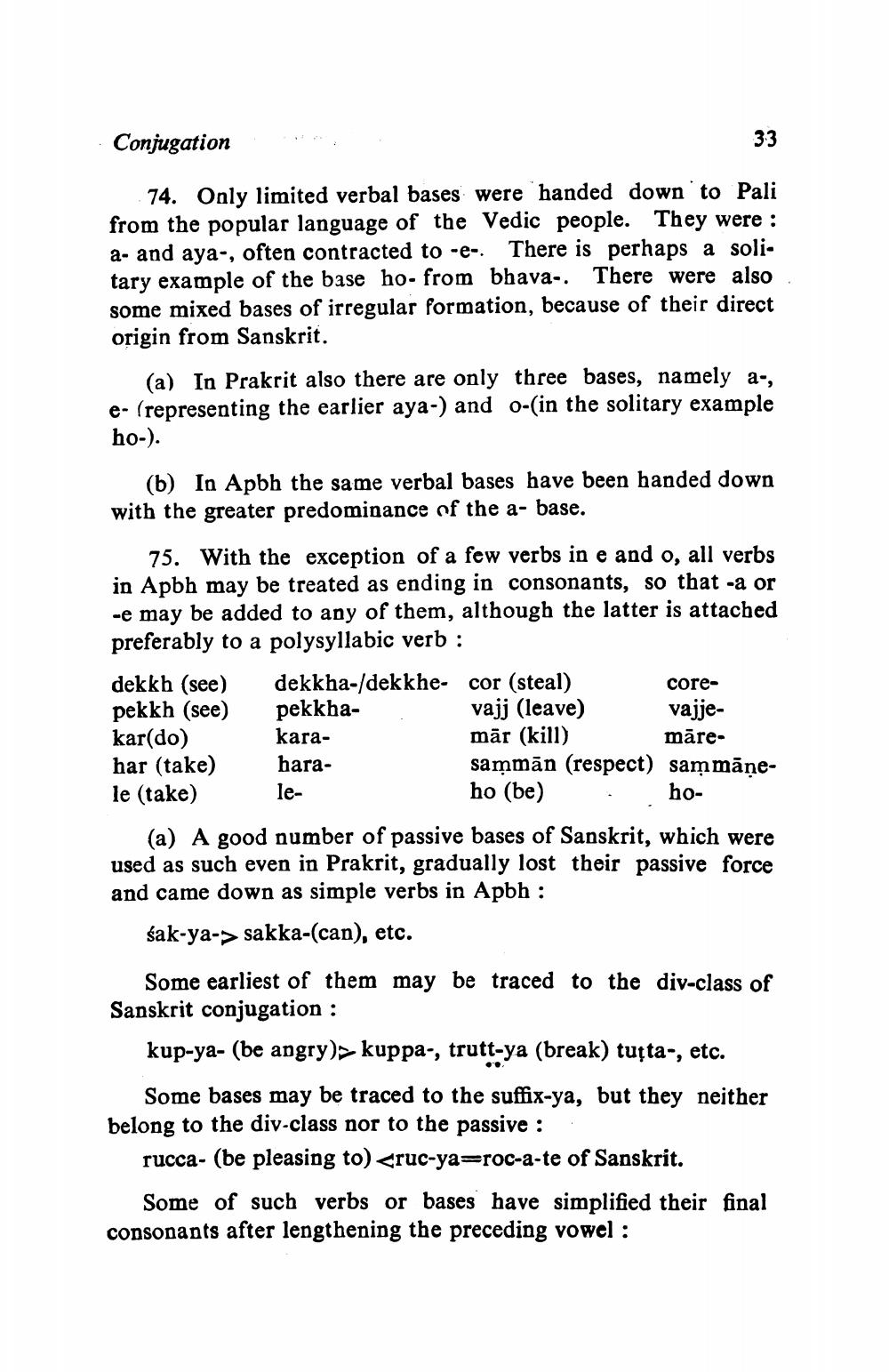________________
Conjugation
33
74. Only limited verbal bases were handed down to Pali from the popular language of the Vedic people. They were : a- and aya-, often contracted to -e-. There is perhaps a soli. tary example of the base ho- from bhava-. There were also some mixed bases of irregular formation, because of their direct origin from Sanskrit.
(a) In Prakrit also there are only three bases, namely a-, e- (representing the earlier aya-) and o-(in the solitary example ho-).
(b) In Apbh the same verbal bases have been handed down with the greater predominance of the a- base.
75. With the exception of a few verbs in e and o, all verbs in Apbh may be treated as ending in consonants, so that -a or -e may be added to any of them, although the latter is attached preferably to a polysyllabic verb : dekkh (see) dekkha-/dekkhe- cor (steal)
corepekkh (see) pekkha
vajj (leave) vajjekar(do) kara
mār (kill)
mārehar (take) hara
sammān (respect) sammāņele (take)
ho (be) . ho(a) A good number of passive bases of Sanskrit, which were used as such even in Prakrit, gradually lost their passive force and came down as simple verbs in Apbh :
śak-ya-> sakka-(can), etc.
le
Some earliest of them may be traced to the div-class of Sanskrit conjugation :
kup-ya- (be angry) kuppa-, trutt-ya (break) tuţta-, etc.
Some bases may be traced to the suffix-ya, but they neither belong to the div-class nor to the passive :
rucca- (be pleasing to) <ruc-ya-roc-a-te of Sanskrit.
Some of such verbs or bases have simplified their final consonants after lengthening the preceding vowel :




